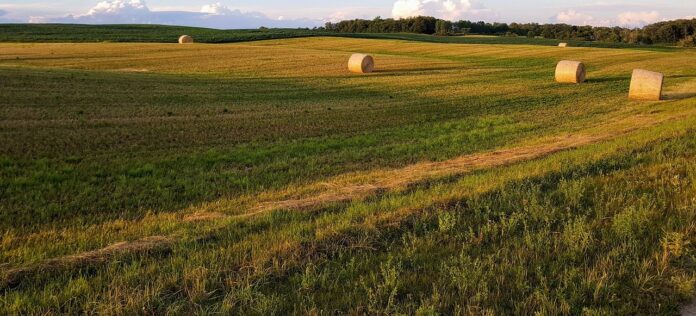Depending on your perspective, the dry weather in northeast Ohio has either been a blessing or a curse.
This hay season has been relatively stress-free so far without a fear of rain, but if it doesn’t rain soon, we will be looking at reduced tonnage for second and third cuttings. Not to mention that we are fast approaching corn pollination and we will need some significant rain during pollination for a good yield.
Yields have been good for baled forage in northeast Ohio, and with lots of time to make dry forage, some farmers are prepared to sell extra hay. If you find yourself in a similar situation, be sure to consider all costs before you put a price on your forage. Unlike some other items you sell off your farm, you get to choose the price for your forage. It’s easy to say, “I just want to get rid of it” and price it low to move it off your farm quickly, but that may be a costly strategy.
Adding up the costs
Before you “just get rid of it”, let’s consider the cost of that bale. We all know fertilizer prices are extremely high right now, and there is nutrient value in that baled forage. For every ton of dry hay you harvest, you are removing approximately 40 pounds of nitrogen, 12 pounds of P2O5 and 45 pounds of K2O. Each forage species will differ, but these values are a good starting point for most grass and legume species. You can find removal rates for your own crop here: https://ohioline.osu.edu/factsheet/anr-96.
If we look at that extra hay as fertilizer, we can put a dollar value on the nutrients using current 2022 fertilizer prices.
Assuming approximately one-third of the nitrogen would be available, one round bale weighing 1,000 pounds would have approximately $30.50 worth of nutrients if it was used as a fertilizer. A 50-pound small square bale would have about $1.50 worth of nutrients.
High prices don’t stop at fertilizer — fuel, twine, net wrap, plastic, equipment, parts, labor and just about everything else is more expensive this year.
If we continue to use the 1,000-pound round bale as an example and add $0.83 for net wrap and another $1.55 for fuel to harvest the hay, there is now $32.88 invested in that bale. We haven’t even started to discuss the cost of transporting round bales back to the farm, land rental prices and/or taxes, machine depreciation, labor, storage, time, other costs and the quality of your hay. Once you start to take all those factors into consideration, it is possible to have $40 or more invested in each bale.
Future needs
You should also consider your future forage needs. If you have “extra” now, what will your forage situation look like if future cuttings are light on tonnage or if you need to feed hay to heifers or dry cows on pasture? That “extra” forage may be needed later this summer to compensate for reduced tonnage later.
Looking at online marketplaces, it appears that round bales of hay are going for approximately $40-$50 with an unknown weight or quality.
With all the costs mentioned, that does not leave much profit margin for the farmer unless they are in the 550-650-pound range. That is still better than some of the auction prices that I have seen. If you purchased hay for $25/ton at auction, let it compost for a few months, and then spread it on your fields that would be the cheapest fertilizer on the market today.
Know your costs
Knowing your cost of production is crucial to stay profitable in times of high input costs. Crop enterprise budgets are a great tool to help you calculate your actual costs, and help you determine a price for your forage.
The OSU Farm Office has several crop budgets available for silage, haylage and dry hay: https://farmoffice.osu.edu/farm-management/enterprise-budgets). The alfalfa budgets can easily be adapted to cool season grasses, annual grasses or other forage species that you have on your farm.
With all of that taken into consideration, are you valuing your baled forage appropriately to cover your costs, make a profit and not sell yourself short on feed? I hope so. Have a great hay season, and I hope we get some rain soon — unless I have hay on the ground.













